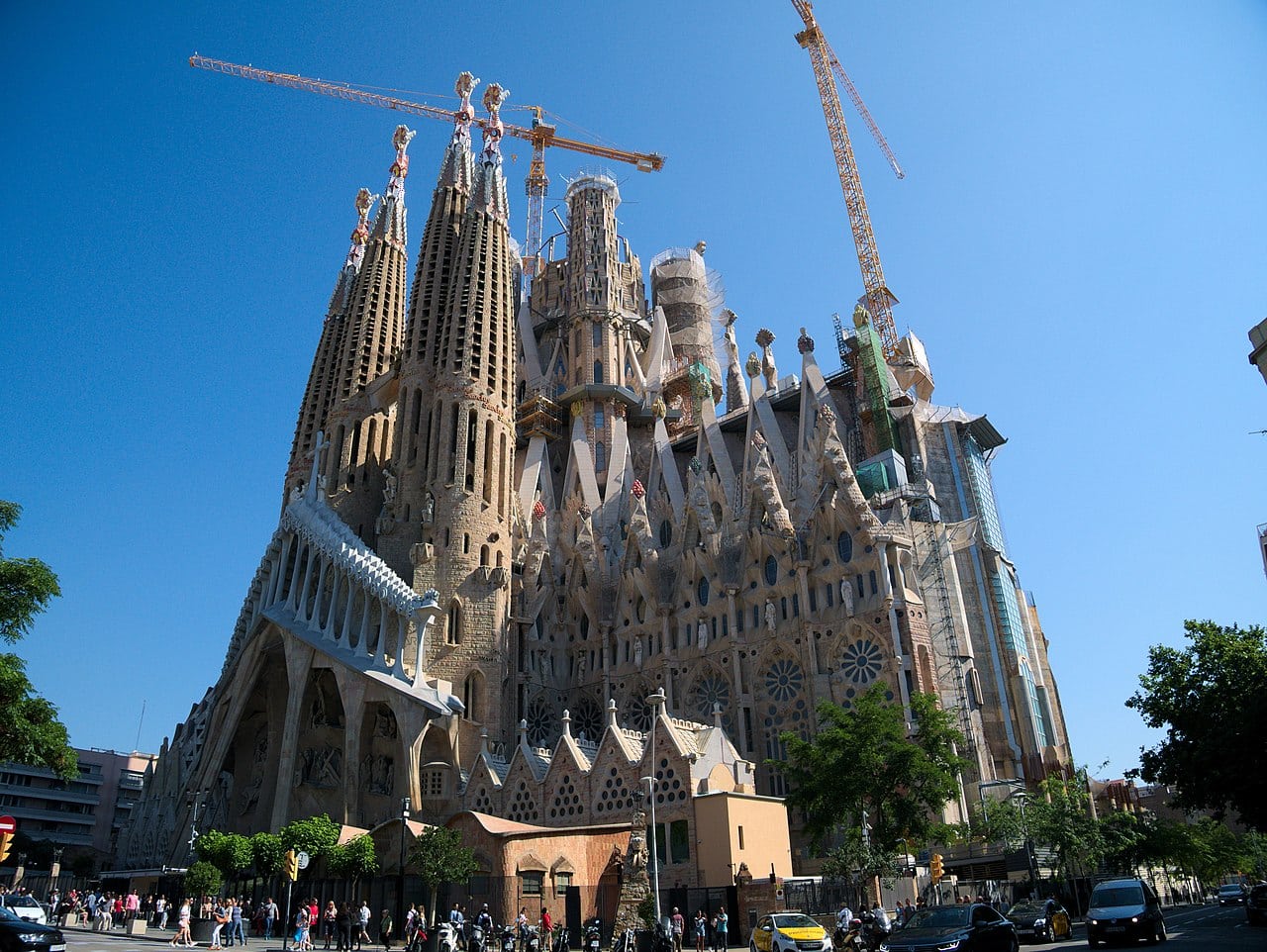
All the curiosities of the Sagrada Familia are closely linked to this temple in the city of Barcelona. It could not be otherwise in a construction due to the genius and peculiar personality of Antonio Gaudi. They are also justified in their whimsical architectural and decorative forms.
But, above all, there must be many in a building that began in 1882 and has not yet been finished. In this it resembles another wonderful church in our country: the Almudena Cathedral de Madrid. Throughout so many years, peculiar circumstances have accumulated that make up the curiosities of the Sagrada Família. We are going to show you starting with their own creator.
The work of Antonio Gaudi
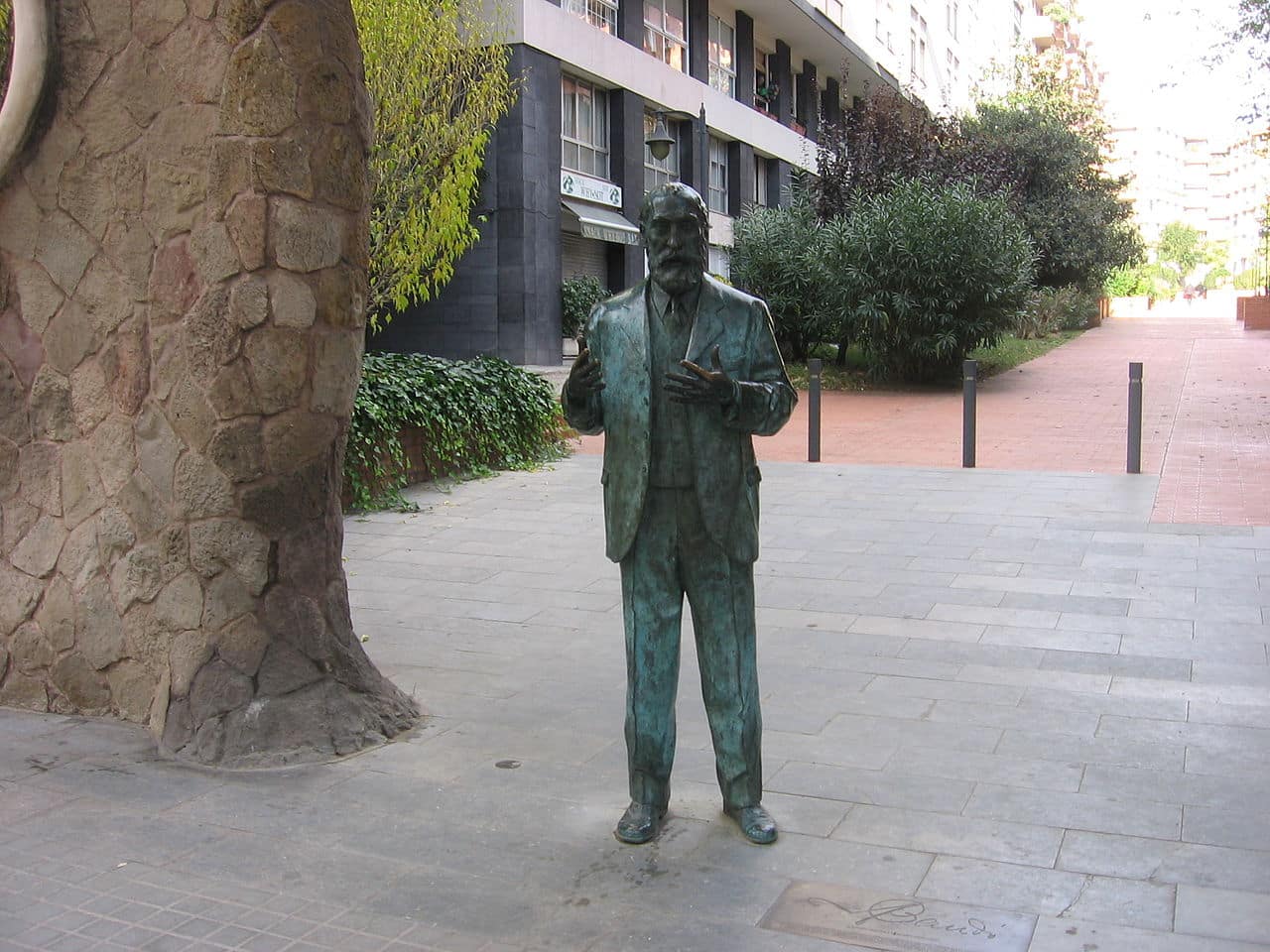
Gaudi monument
The Sagrada Família cannot be understood without knowing the personality of its architect. However, the first thing we should point out to you is that it was not Gaudí who started its construction. The temple was a project of the Association of Devotees to San José, who entrusted it to Francisco de Paula del Villar. One of his advisors was Joan Martorell, who counted Gaudí among his disciples.
Just a year after starting the project, Villar resigned. And, since nobody wanted to take care of him, it was the brilliant architect who agreed to continue the works. But Gaudí completely transformed Villar's idea. This had designed a traditional temple according to the architectural currents of the time. Instead, the new manager created a unique temple in the world, absolutely original and closely linked to his religious and artistic beliefs.
Since he took charge of the construction of the Sagrada Familia, Gaudí dedicated forty-three years of his life. At times, he combined it with other projects such as the Episcopal Palace of Astorga. But in others he was so devoted to his work that even came to live in the temple in construction. He was a deeply religious man and ended up becoming obsessed with finishing off the Sagrada Família.
grave of its creator
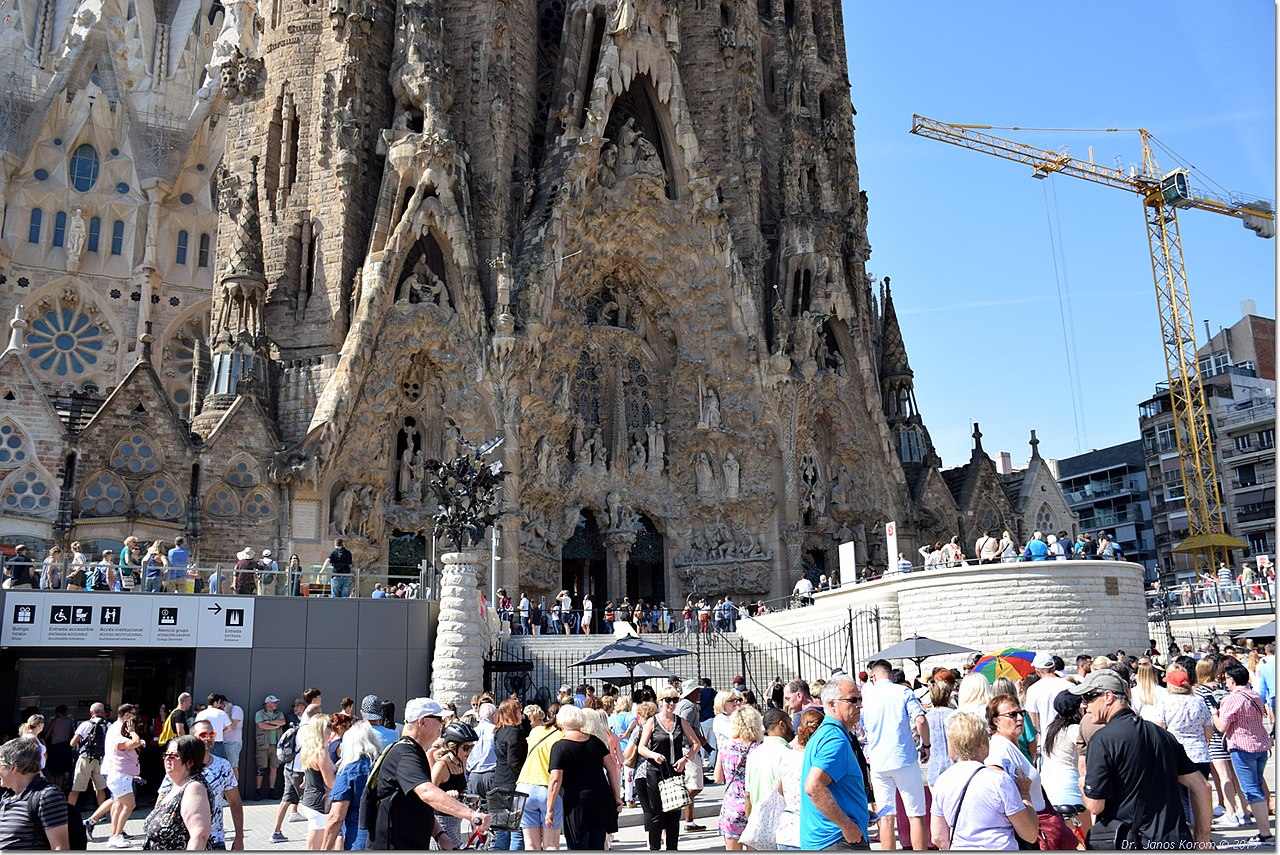
Access through the Nativity façade to the Sagrada Familia
In fact, the Sagrada Familia is the place where Gaudí was buried. His tomb is located, specifically, in the chapel of the Virgen del Carmen, which, in turn, is the first niche of the crypt and also the only part of the temple that he saw finished.
But the indissoluble union between Gaudí and his great work does not end here. everything in her shows the cool personality of the architect. Thus, for example, he projected that the Sagrada Família would measure, at its highest point, 172,5 meters. That is, about five less than the Montjuic mountain. And it was no coincidence, since Gaudí justified it by saying that "the temple was the work of man and the mountain of God". Therefore, the first could never surpass the second.
Another curiosity of the Sagrada Família, undoubtedly Gaudí, is the absence of lines in the construction. Inside the temple there is not a single one. This too is premeditated. The architect said that the line was of man and the curve of nature. Precisely for this reason, the natural forms They are very present in the building.
There are many columns with tree shapes or that branch out imitating plant species. Likewise, those of Passion Porch they are based on the characteristics of redwood forests. But even more curious is the fact that he used many reptiles and amphibians to decorate your building. Because these species symbolize Evil. It represents them on their backs, fleeing from Divinity. Even the roof of the schools adjoining the temple imitates the drainage system of the magnolia leaves.
Several interruptions and a project to finish the Sagrada Familia
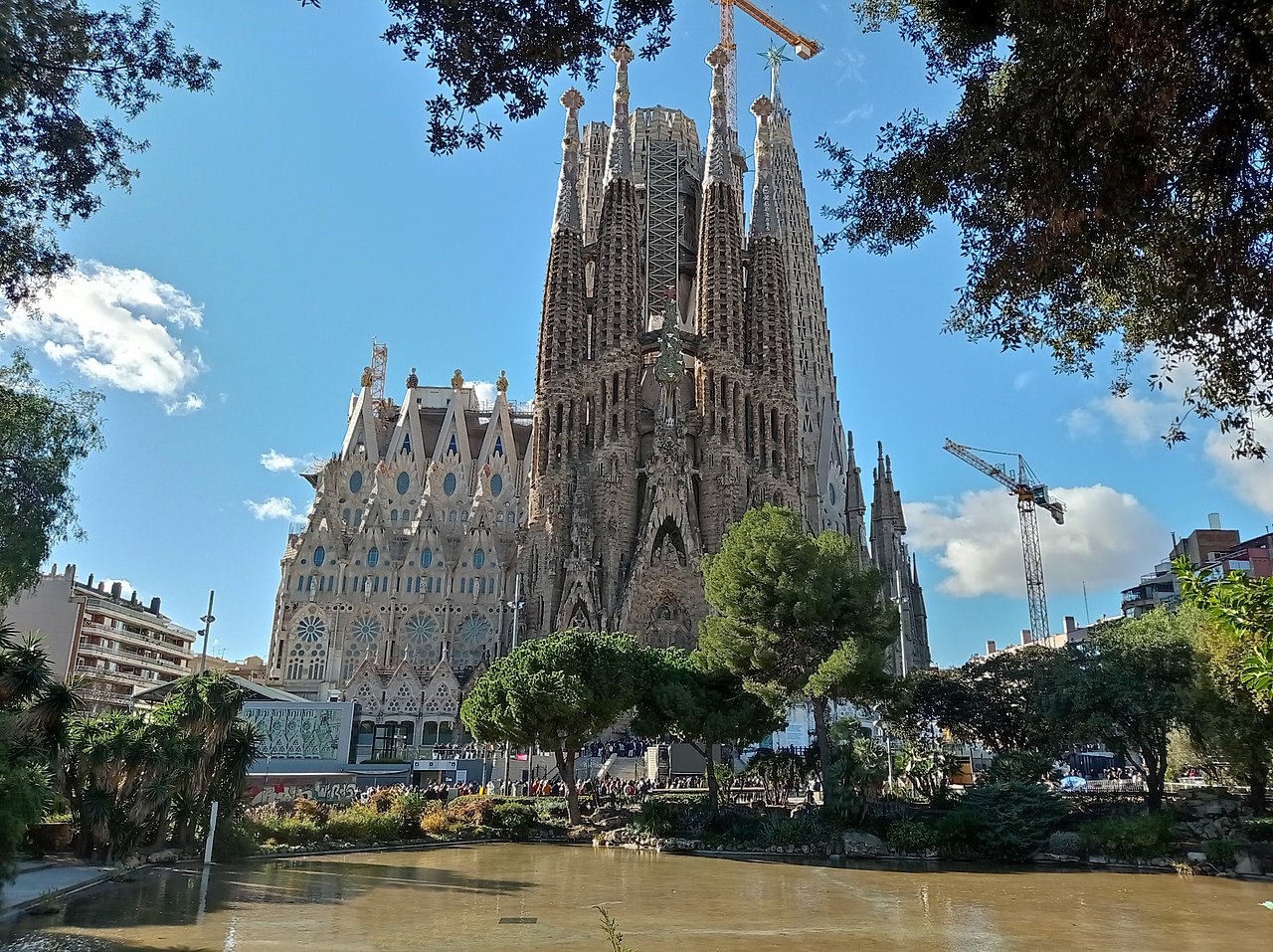
General view of the temple
Despite the fact that it has not yet been completed, the construction of the Sagrada Família only was interrupted twice. The first was during the Civil War. During this period it was even set on fire, which caused original plans and photographs to be lost. In turn, this led the authorities to consider abandoning the project.
For his part, the second time was much later. The Covid-19 pandemic stopped the works on March 13, 2020, although, in this case, they restarted in October of that same year. In turn, this latest incident has led to the completion of the works is delayed. It was planned to finish them in 2026, coinciding with the centenary of the death of Gaudí. But he is no longer going to give time, so the anniversary cannot be commemorated by finishing his great work.
Curiosities of the Sagrada Familia regarding its construction: dimensions and materials

One of the side naves of the Sagrada Familia
We have already mentioned the maximum height of the Barcelona temple. But we haven't told you what it will be the tallest building in the city. It will surpass the Mapfre and Glóries towers, as well as the Hotel Arts, all of which measure 154 meters. On the other hand, its dimensions will give you an idea of the fact that it has eighteen towers. Twelve incarnate the apostles, another four the evangelists and the other two, respectively, the Virgin Mary and Christ. Also weighs 200 tons and the pieces that make it up are not easy to move.
In fact, those responsible for the project created a special tool, the octopus, to move those pieces. This facilitates its assembly and its precision. Keep in mind that, every year, they spend four million visitors for the monument. And it's not easy to build with so many people around. Also, two millimeters of error in the placement of the stones can cause an accident.
All these works are carried out with great care. In fact, each stone is analyzed to determine its quality and check if it is suitable for the monument. And this leads us to explain another curiosity about the Sagrada Família. This resides in that fifty different types of stone have been used in its construction. At first, it was taken from the Montjuïc quarries. But, currently, they are brought from different parts of Europe as Scotland o France.
From these places moles of four hundred tons of weight. Then they are deposited in an enclosure equivalent to two football fields where the first jobs of panel conversion. Subsequently, they are taken to the temple for placement. Precisely, regarding this process, it is said that the Sagrada Família does not have two identical stones.
A unique and absolutely original architectural style
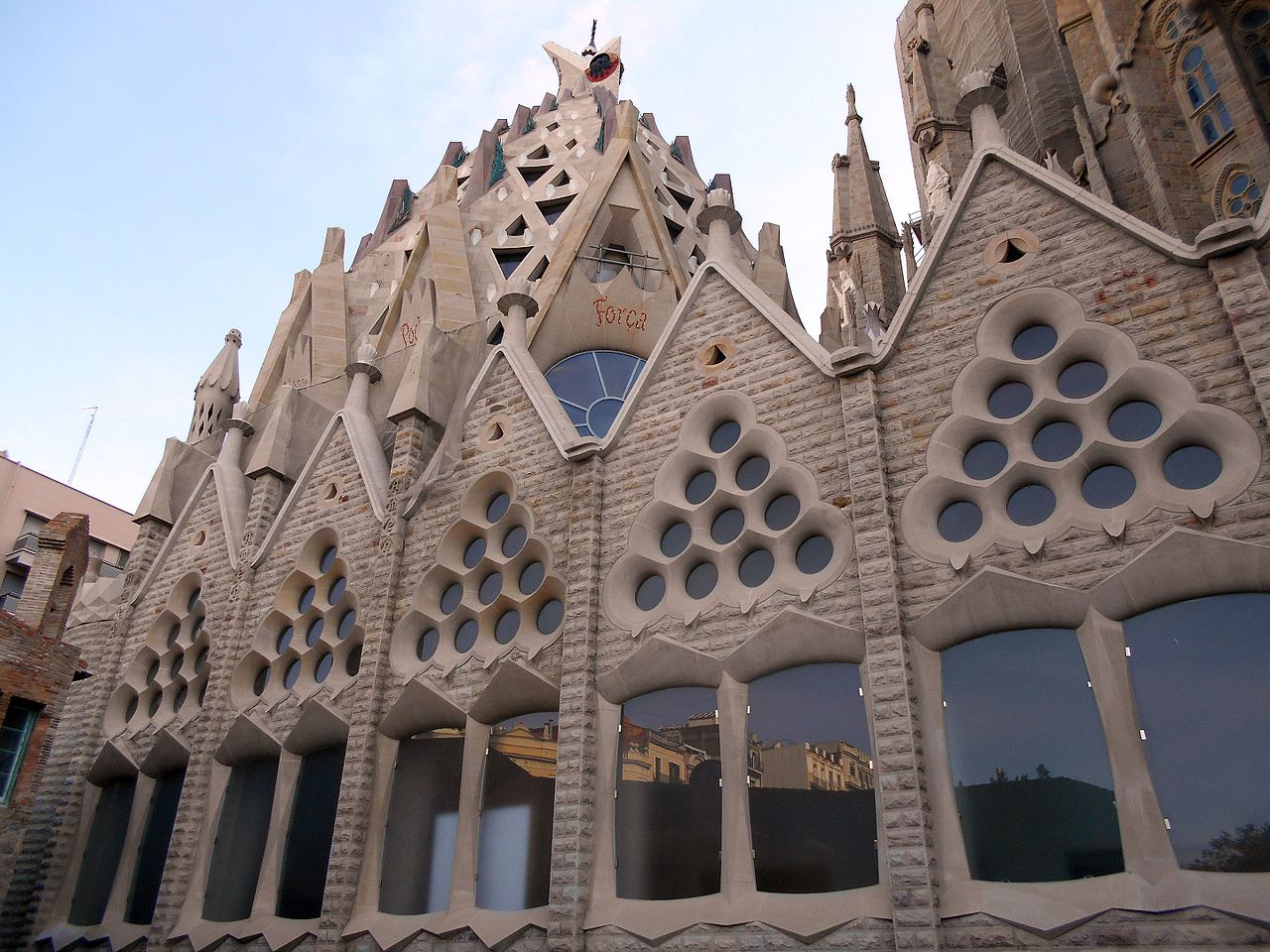
Detail of the cloister of the Sagrada Familia
But, despite everything we have told you, perhaps the most curious thing about the Sagrada Família is its Architectonic style, if we can frame it in one. When Gaudí took charge of the construction, the design proposed a neo-Gothic temple and the construction of the crypt had only begun.
However, the architect from Reus believed that an architectural style such as Gothic was imperfect. For him, its straight forms and its system of pillars and flying buttresses did not reflect nature. And, precisely, one of his maxims was that art had to reproduce it. Likewise, according to him, nature is given to regulated geometric forms such as the helicoid or the conoid. That is why he used them in his great creation and, when contemplating it, it seems to us in whimsical ways.
We have already told you before about how it was based on natural elements for certain structures of its creation. And also that his appreciation for nature can be seen in the decoration of the Sagrada Família. But, equally, he relied on her to give it luminosity to the interiors and to solve many other aspects such as the placement of star-shaped columns or spiral staircases. For all this, the Sagrada Família has been characterized as a naturalistic construction. But yes, within original Gaudi style.
The magic square and other curiosities of the Sagrada Familia
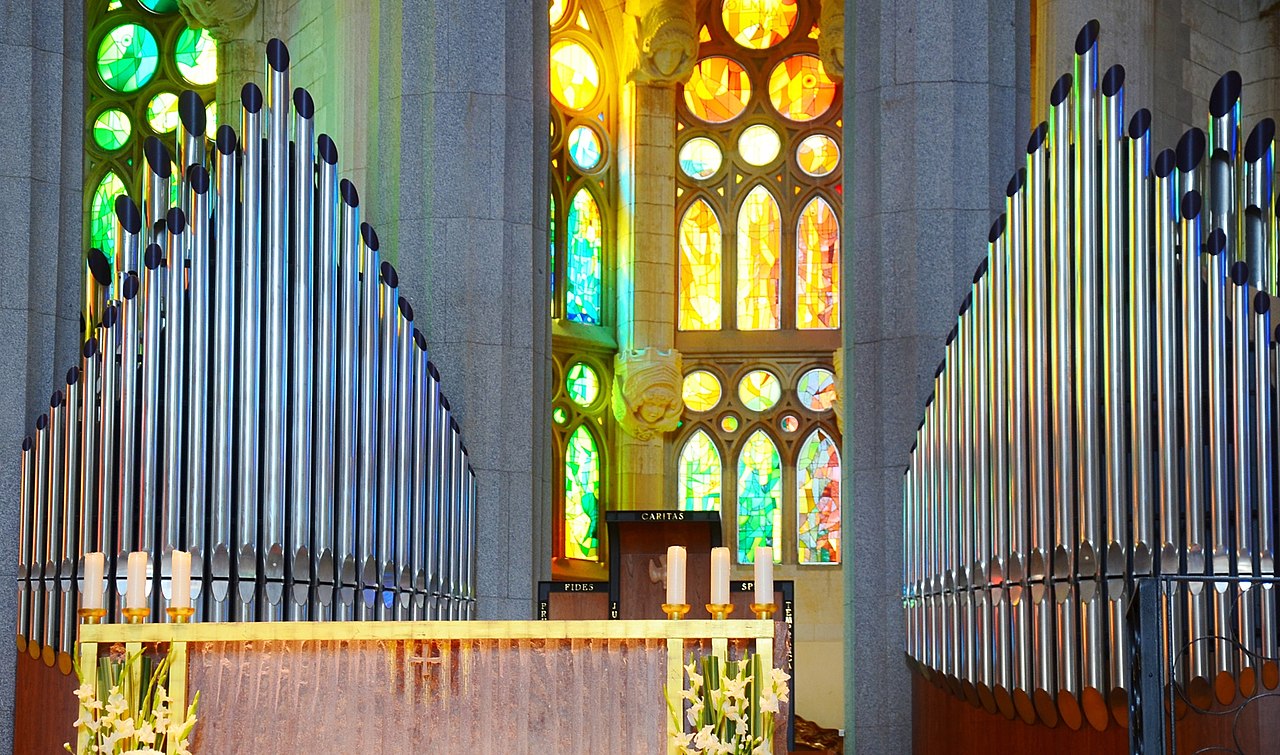
The impressive organ of the church
To finish our review of the curiosities of the Sagrada Família, we will talk about certain construction surprises. It is the case of the call magic square, which is located in the passion facade. It is a kind of sudoku that, adding its numbers, always gives the same result: thirty-three. That is, the age of Christ when he was crucified.
On the other hand, crowning the charity portal, you can see a pelican feeding its two chicks. It is considered a allegory of the Eucharist, since, according to medieval belief, the female of this bird fed her creatures with her own blood, if necessary. Likewise, in the Nativity façade, there are two columns that rest on two turtlesone by sea and one by land. There have been numerous discussions about what they symbolize. For some, it is about representing the balance of the cosmos according to Chinese culture. Instead, for others, it recreates the pillars of mercy and the rigor of the tree of life.
But more impressive is the organ that you can see inside the temple. It consists of two large bodies that add up to almost fifteen hundred tubes. It has three keyboards, two manual and one pedal, and is capable of reproducing twenty-six different sounds. Logically, this was not Gaudí's creation, since he even has computers to memorize his tunes. But it is not less impressive for that.
In conclusion, we have shown you some of the curiosities of the Sagrada Familia that you should know before visiting this wonderful monument. Without a doubt, the Gaudí's great work It is one of the many jewels that they offer you Barcelona and its surroundings.